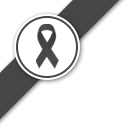Forum Replies Created
-
AuthorPosts
-
-
2025-08-09 at 9:58 pm #49962
 Than Soe OoParticipant
Than Soe OoParticipant• Why was the author interested in investigating the suicide problem in Thailand during the time?
The researcher aims to identify the significant factors influencing suicide rates in Thailand. This study is prompted by the rising number of suicide cases, which ranged from 3,600 to 4,000 annually between 2005 and 2014. The average suicide rate exceeded 6 cases per 100,000 population, especially after 2011. While numerous studies have been conducted in developed countries to address the increasing trend of suicide, this research focuses on exploring the factors affecting suicide rates within the Thai context. The study is designed as a cross-sectional analysis to examine how cultural, social, and economic factors influence the population across different regions of the country.
• Each of students picks one potential risk factor mentioned in the paper and explains how the variable can contribute to the suicide rate?
The researcher aims to identify the significant factors influencing suicide rates in Thailand, noting a concerning rise in the number of suicide cases, which ranged from 3,600 to 4,000 annually between 2005 and 2014. The average suicide rate exceeded 6 cases per 100,000 population, particularly following 2011. While numerous studies have been conducted in developed countries to address the increasing trend of suicide, this research seeks to explore the specific factors affecting suicide rates within the Thai context. It was conducted as a cross-sectional study examining how cultural, social, and economic influences vary across different regions of the country.
• How statistical modeling can contribute to investigate the epidemiology and spatial aspects of Thai suicide problem?
The primary contribution of statistical modeling in epidemiology is its ability to identify patterns and correlations between various risk factors and outcomes, such as suicide rates. By employing multiple regression analysis with two models, the study can investigate the impact of economic and social factors related to suicide rates in Thailand. Additionally, spatial analysis can reveal disparities across different geographical areas, providing insights into the suicide problem. This approach allows for the identification of high-risk areas and can assist policymakers in implementing targeted interventions and allocating resources effectively. -
2025-08-01 at 3:37 pm #49843
 Than Soe OoParticipant
Than Soe OoParticipantThanks for your discussion, Wannisa. You make a very important point. Understanding the geographic concentration of health issues allows for more targeted and efficient allocation of resources, which can significantly improve prevention, treatment, and overall health outcomes. As new geographic tools—such as advanced GIS (Geographic Information Systems), remote sensing, and spatial analysis techniques—continue to develop, spatial epidemiology will indeed become increasingly crucial. These tools provide more precise, real-time data that help identify disease patterns, environmental risk factors, and vulnerable populations. This, in turn, enables healthcare systems to respond more effectively and tailor interventions to the specific needs of different communities. Overall, the enhancement of spatial epidemiology holds great promise for advancing public health strategies and reducing health disparities.
-
2025-07-31 at 10:29 pm #49691
 Than Soe OoParticipant
Than Soe OoParticipant1. Locations in epidemiological research have not been as heavily emphasized as other components. Traditionally, studies focusing on place or location have received considerably less attention. From a public health perspective, understanding that a health problem is concentrated in specific areas is crucial for the effective distribution of resources for prevention, treatment, or improvement of health outcomes. Several factors contribute to this apparent lack of interest in location, including a shortage of appropriate databases and insufficient software tools. Additionally, spatial analysis techniques and their associated tools can seem overwhelmingly complex. There is a clear need for a glossary to explain common terms in geographical epidemiology, spatial analysis, and Geographic Information Systems (GIS). Spatial epidemiology can be viewed as an interdisciplinary field that connects environmental sciences related to energy, food, and water security, working across various domains such as government and industry. This approach fosters the types of connections that can enhance understanding and collaboration across disciplines.
2. Spatial epidemiology emphasizes the importance of considering where individuals live and work as potential determinants of disease. Health outcomes are shaped by a combination of factors, including personal attributes, physical and social environments, cultural norms, and the availability and use of health services. Variables such as age, sex, and socioeconomic status can vary significantly between locations, and these differences may influence disease risk. In many cases, “place” serves as a substitute for the interaction between genetic factors, lifestyle choices, and environmental conditions. Unfortunately, many public health specialists have overlooked the spatial dimension of disease processes. Health-related data—whether it comes from population studies, environmental exposure assessments, or healthcare utilization—can typically be linked to specific locations, such as street addresses (known as occurrence data) or to broader areas, like communities (referred to as aggregate summaries, such as count data). By analyzing data related to various locations (e.g., home, workplace, hobby sites), researchers can create a clearer connection to biological models. This approach allows for a better understanding of how individual characteristics, such as age, sex, and genetics, contribute to disease risk. As new geographic techniques become more visually appealing and accessible, spatial epidemiology studies are expected to become more prevalent. Improved data and methodologies will enhance our understanding of the complex interactions between the environment and health, ultimately contributing to the pursuit of cleaner and healthier living conditions.
-
2025-07-30 at 12:34 pm #49452
 Than Soe OoParticipant
Than Soe OoParticipantDear Arjarn,
Thank you so much for the warm welcome!
Regards,Than Soe Oo
-
2020-07-10 at 10:54 am #20715
 Than Soe OoParticipant
Than Soe OoParticipantDear Ameen, your dashboard is very attractive and interested comparison the covid-19 situation and GDP of country. We can see clearly daily confirmed , daily recovered and daily by country, continent. This dashboard is very useful.
-
2020-07-04 at 10:21 am #20569
 Than Soe OoParticipant
Than Soe OoParticipantDear Tullaya. Sita,
You can see update data in my dashboard. At first, I refresh on my Power BI Desktop and then save and replace updated information. I publish to Power BI again. Secondly, I open My workspace on Power BI and publish to web again. That is why my published dashboard is up-to-date. -
2020-06-28 at 5:17 pm #20468
 Than Soe OoParticipant
Than Soe OoParticipantI would like to share my final dashboard. Please visit my link the following;
My Dashboard
One page dashboard for covid-19 is very useful for policy maker and others. Dashboard for covid-19 is a wonderful way to monitor global situation of covid-19 especially confirmed case, recovered case and death case and see all of covid-19 status at a glance. The visualizations on a dashboard come from three underlying datasets. A dashboard combines appropriate graphs and charts, providing interactive visualization. -
2020-06-27 at 12:24 am #20462
 Than Soe OoParticipant
Than Soe OoParticipantI would like to share my power BI Dashboard;
My Dashboard
Map is very useful for global situation of Covid-19 according to country and continent. Card and multi-row card are also useful and powerful as a key-message for big information. The shape of the funnel conveys the health of the process tracking.Treemaps are a great choice to display large amounts of hierarchical data. A scatter chart shows the relationship between two numerical values. Scatter charts are a great choice to show relationships between two numerical values. -
2020-06-06 at 9:46 am #19919
 Than Soe OoParticipant
Than Soe OoParticipantI would like to choose the following link for data visualization dashboard for COVID-19 disease.
https://www.gavi.org/covid19/dashboard
According to data visualization point of view, I like this dashboard because of the followings:
(1)we can know Countries with confirmed cases, Global Confirmed Cases and Global Confirmed Deaths(blue color and yellow color text, can see clearly).
(2)In line graph, x-axis is month and y-axis is number. We can see golbal cases(Blue color) and deaths(Red color) daily and cumulative by placing on line graph. We can compare day by day and see trend also by clicking DAILY CHANGE and LOG.
(3)Global map give message the situation of covid-19 currently by country and compare country by country.I like the color used (blue color bubble for cases and red color bubble for deaths).
(4)In frequency table, we can see and observe the situation of covid-19 of country alphabactically and can make comparison by country.
(5)In the last parts, there are line graph and bar chart. In line graph, we can compare covid-19 casea and deaths daily by region. In bar chart, we can compare covid-19 casea and deaths currently by regions(cumulative cases and deaths).
I do not like this dashboard because there are many lines in the line graph of the last parts and not up-to-date data (Data last updated on June 4, 2020) but I used this dashboard at 9:00 AM, 6/6/2020. -
2025-08-09 at 10:41 pm #49964
 Than Soe OoParticipant
Than Soe OoParticipantThank you for your discussion. You bring up a very important point.The investigation into Thailand’s suicide problem is crucial due to the steady high number of suicides, the distinct economic and social context of Thailand compared to industrialized societies, and the significant influence of divorce rates on suicide that necessitates focused, data-driven public health responses.
-
2025-08-09 at 10:32 pm #49963
 Than Soe OoParticipant
Than Soe OoParticipantThank you for your insights, Wannisa. You raised a very important point. Overall, Thailand confronts a serious mental health and suicide crisis exacerbated by social, economic, and demographic challenges. The use of statistical and spatial epidemiological methods is essential for developing effective policies and interventions tailored to the most vulnerable groups and regions.
-
2020-07-09 at 10:52 am #20710
 Than Soe OoParticipant
Than Soe OoParticipantThank you for your comments. Now, I have already corrected my mistakes and published again.
-
-
AuthorPosts

